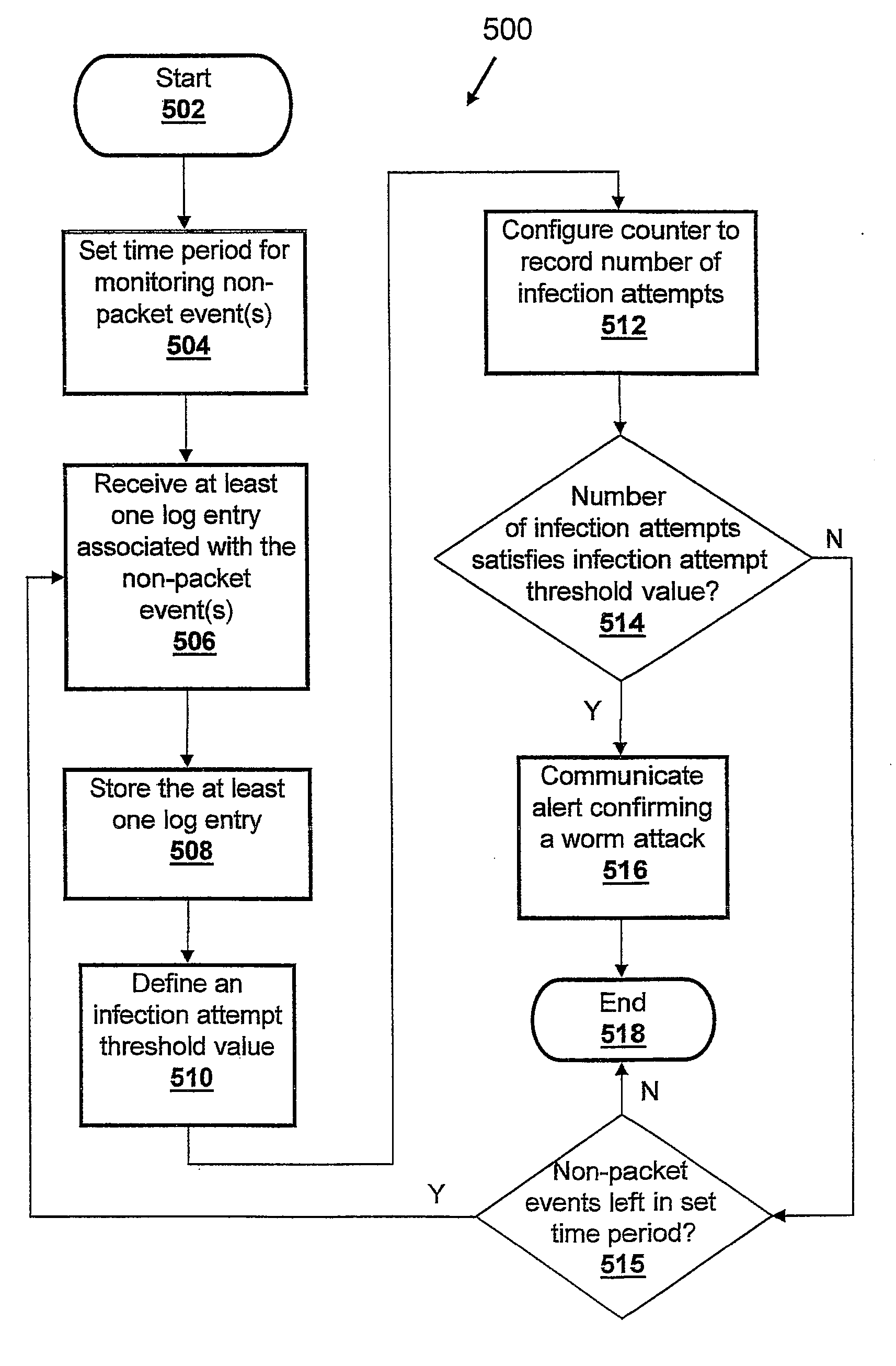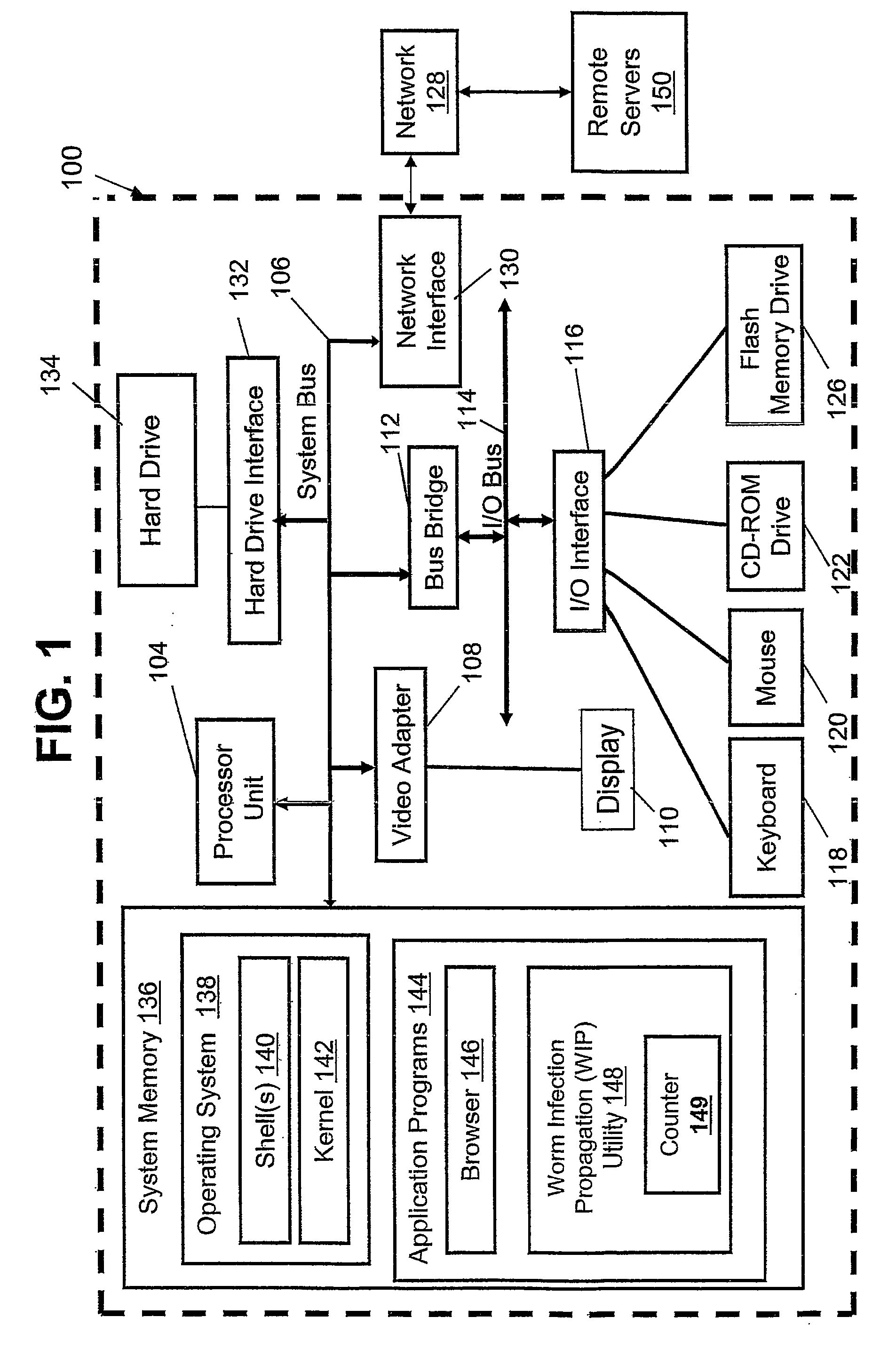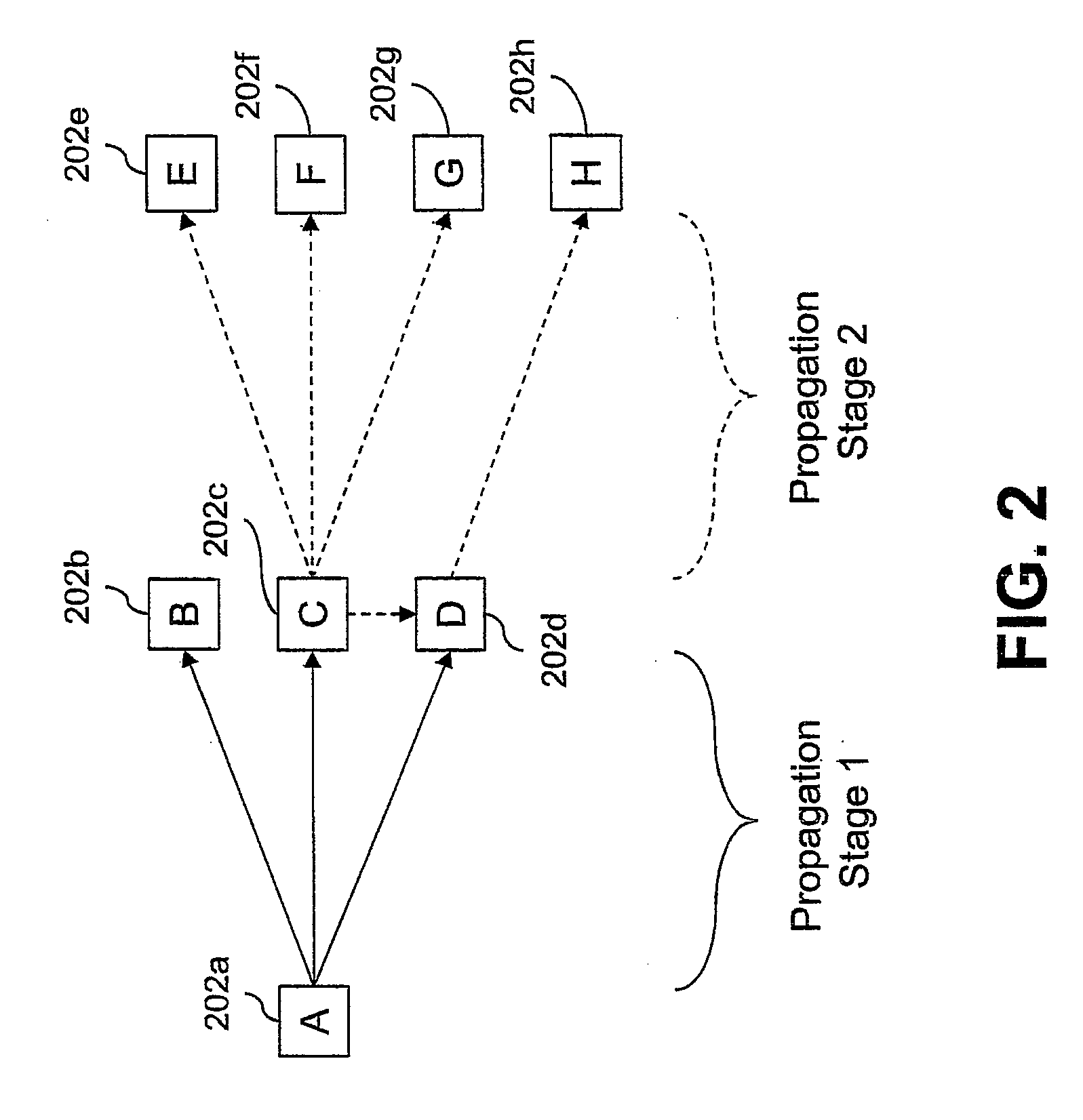Statistical worm discovery within a security information management architecture
a technology of security information management and statistical worm discovery, applied in the field of network worm detection, can solve the problems of time-consuming process, difficult to discover new worm attack outbreaks, and only obtain signatures
- Summary
- Abstract
- Description
- Claims
- Application Information
AI Technical Summary
Benefits of technology
Problems solved by technology
Method used
Image
Examples
Embodiment Construction
[0009]In view of the foregoing, a method, system, and computer program product for identifying a worm attack on a computer network are disclosed. A predetermined time period for monitoring one or more non-packet events among a plurality of network events is set. A log entry associated with the one or more packet events is received. The one or more received log entries identify a first source of a worm infection threat, at least one first destination of the worm infection threat, at least one first timestamp of the worm infection threat, and a non-packet event type of the worm infection threat. The one or more log entries are stored. An infection attempt threshold value is defined. A counter is configured for recording, within the predetermined time period, a number of infection attempts by the at least one first destination of the worm infection threat to at least one second destination of the worm infection threat. The worm infection threat has the same non-packet event type in the...
PUM
 Login to View More
Login to View More Abstract
Description
Claims
Application Information
 Login to View More
Login to View More - R&D
- Intellectual Property
- Life Sciences
- Materials
- Tech Scout
- Unparalleled Data Quality
- Higher Quality Content
- 60% Fewer Hallucinations
Browse by: Latest US Patents, China's latest patents, Technical Efficacy Thesaurus, Application Domain, Technology Topic, Popular Technical Reports.
© 2025 PatSnap. All rights reserved.Legal|Privacy policy|Modern Slavery Act Transparency Statement|Sitemap|About US| Contact US: help@patsnap.com



